Sewing enthusiasts and fashion designers often seek to elevate their creations with distinctive and eye-catching details. One such technique that adds a touch of artistry to sewing projects is the slot seam.
This elegant and decorative method involves seamlessly incorporating a contrasting fabric strip beneath the main fabric, resulting in a visually stunning effect.
Whether you’re looking to enhance the texture, introduce a pop of color, or create a unique design element, mastering the art of sewing a slot seam is a valuable skill.
In this comprehensive guide, we will walk you through the step-by-step process of creating slot seams that will make your garments and accessories stand out with precision and flair.
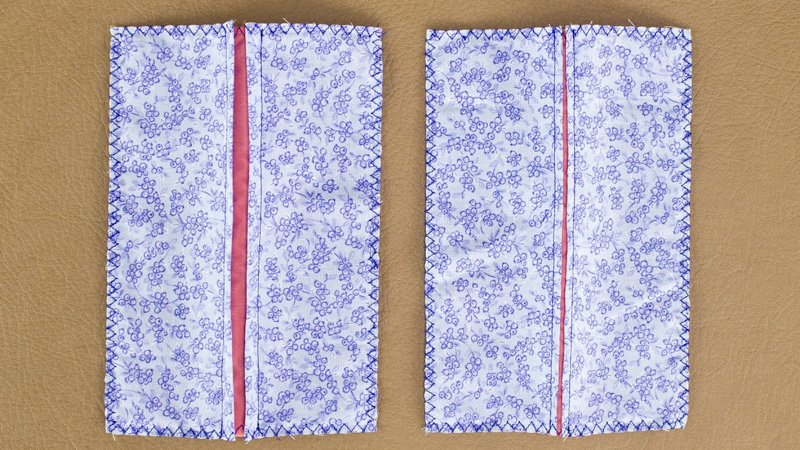
What is a Slot Seam?
A slot seam is a decorative sewing technique that involves inserting a contrasting fabric strip beneath the main fabric. This creates a visually striking effect, with the contrast fabric peeking through the seam on the right side of the material.
Slot seams are often used to add unique textures, colors, or patterns to clothing and accessories, enhancing their overall design and aesthetic appeal.
This technique is popular in the world of fashion and sewing for its ability to create eye-catching, personalized details in garments.
How to Sew a Slot Seam? 9 Steps
Sewing a slot seam is a delightful technique that can add flair and personality to your sewing projects. This decorative seam involves inserting a contrasting fabric strip beneath the main fabric, creating a visually striking effect.
Here’s a concise guide on how to sew a slot seam:
Step 1: Prepare Your Materials
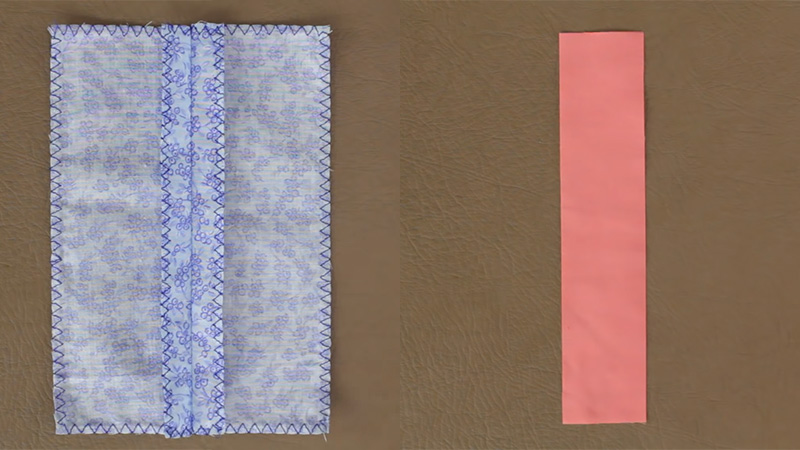
Begin by gathering the necessary materials: main fabric pieces, a contrast fabric strip (twice as wide as your seam allowance and as long as your intended seam), a sewing machine, matching or contrasting thread, scissors, pins, an iron and ironing board, tailor’s chalk or a water-soluble pen, and finishing tools like a serger, zigzag stitch, or pinking shears.
The choice of your contrast fabric will play a significant role in the final look of your slot seam, so choose it carefully.
Step 2: Mark the Seam Line
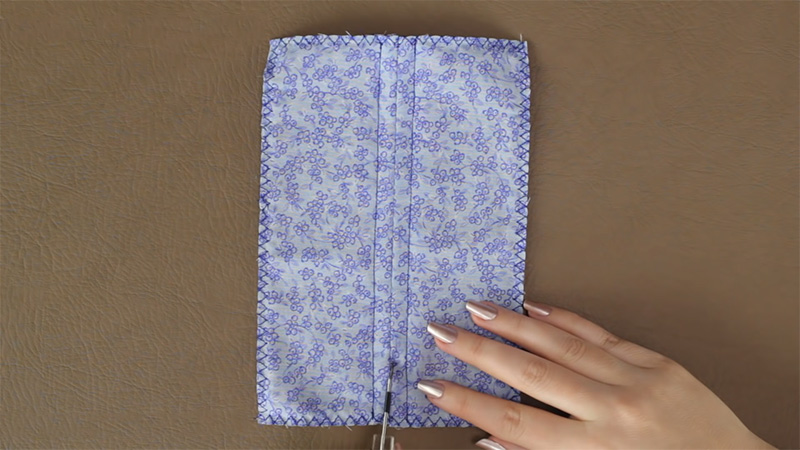
On the wrong side of your main fabric pieces, use tailor’s chalk or a water-soluble pen to mark the seam line. This line will guide your sewing and help you maintain accuracy throughout the process.
Step 3: Baste the Seam
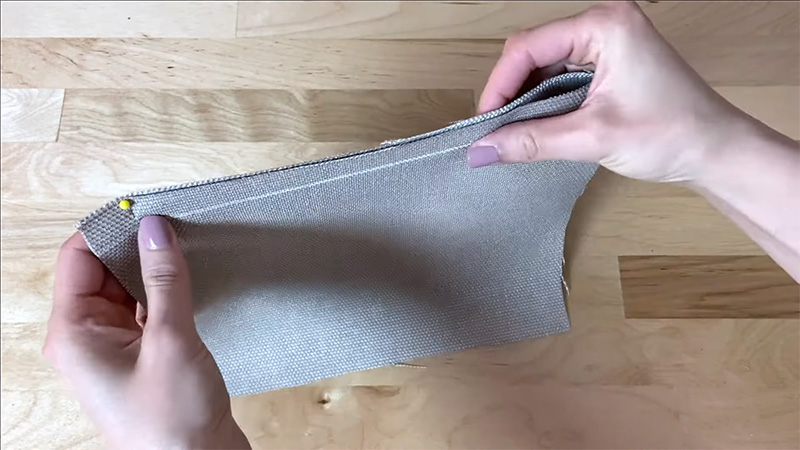
Align the main fabric pieces with their right sides together along the marked seam line. Temporarily secure them by basting along the seam line using a long stitch length on your sewing machine.
Avoid backstitching at the beginning or end of the seam; these basting stitches are meant to be removed later.
Step 4: Press and Remove Basting
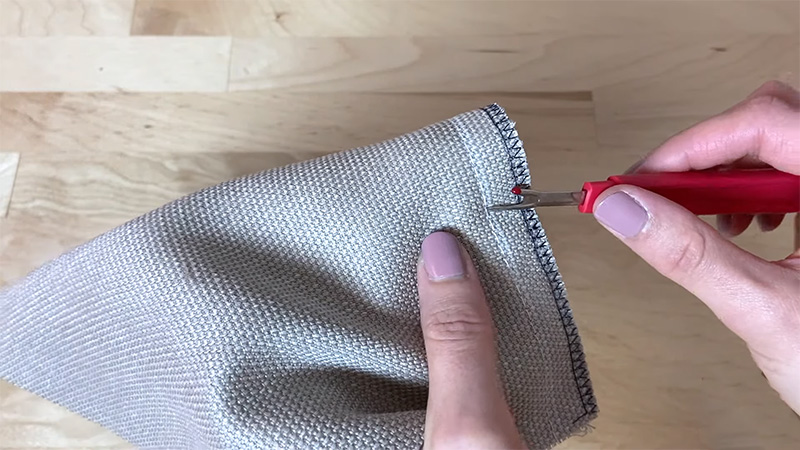
With an iron, press the seam open. The basting stitches will make it easier to open the seam. Carefully remove the temporary basting stitches as they are no longer needed.
Step 5: Insert the Contrast Fabric
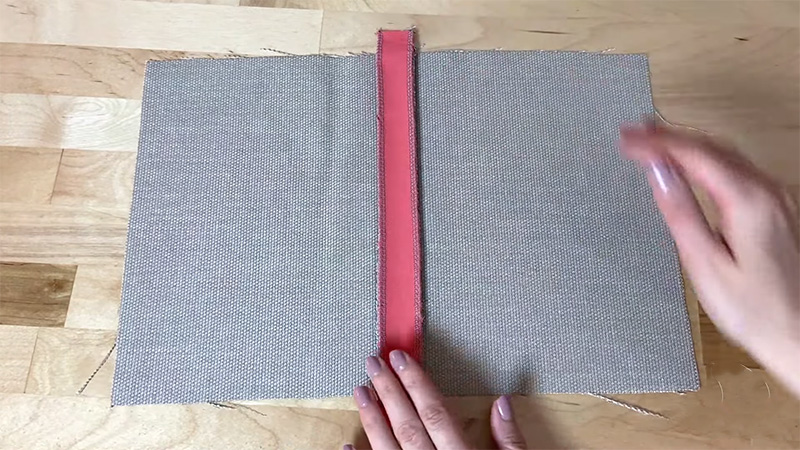
Place the contrast fabric strip on the wrong side of the seam, aligning it precisely with the marked seam line. The contrast fabric should be visible through the seam opening on the right side of the fabric.
Secure the contrast fabric strip in place with pins to keep it from shifting.
Step 6: Fold and Press
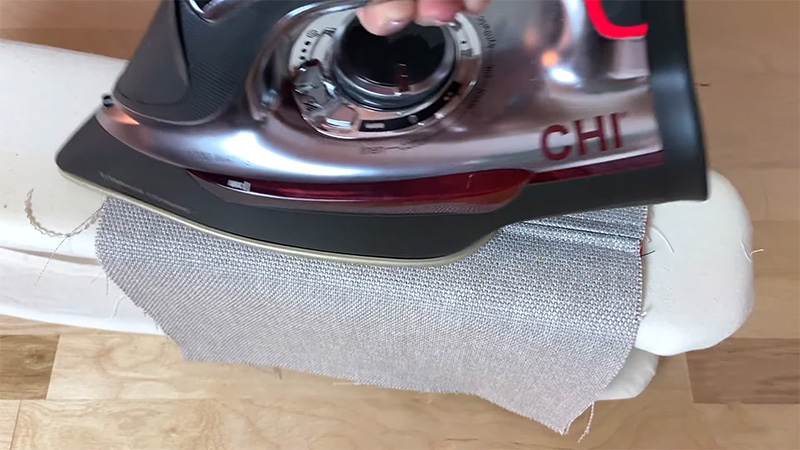
Fold the seam allowances of the main fabric over the contrast fabric strip, effectively encasing it within the seam. Use your iron to press the seam allowances flat, ensuring the contrast fabric strip remains neatly tucked between the folded seam allowances.
Step 7: Topstitch the Slot Seam
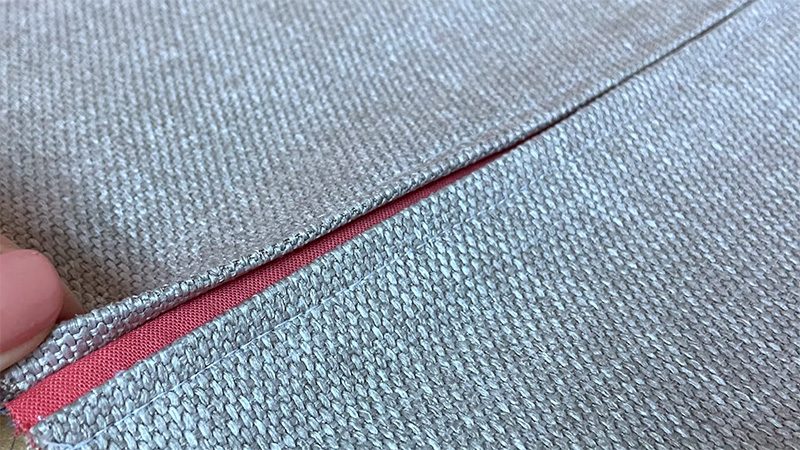
Switch to the right side of the fabric and topstitch along both edges of the seam allowances, sewing close to the fold. This step secures the seam allowances and the contrast fabric strip in place.
You can choose to use matching or contrasting threads based on your desired aesthetic.
Step 8: Final Press
Give your completed slot seam a final press from both sides to set the stitches and achieve a polished appearance.
Step 9: Admire Your Work
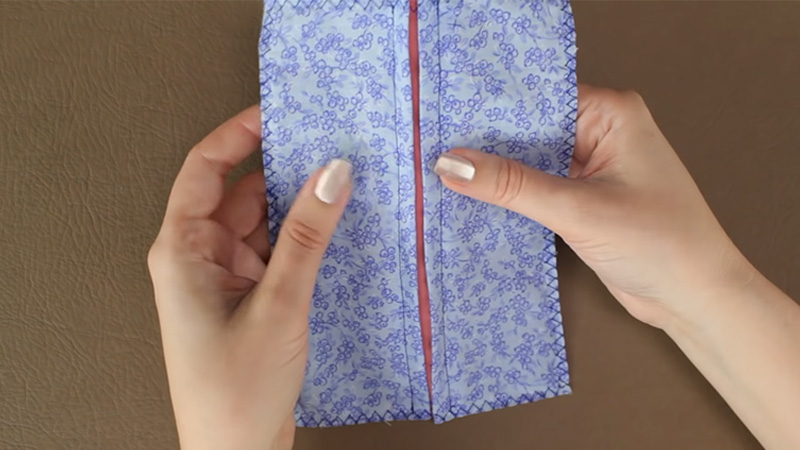
Take a moment to appreciate the unique and captivating detail your slot seam has added to your sewing project. Whether it’s a subtle texture or a pop of color, your slot seam will undoubtedly make your garment stand out and showcase your sewing skills.
What is a Slot Seam Used for?
A slot seam is a specialized sewing technique used primarily for decorative and stylistic purposes in the world of fashion and textile design. This unique sewing method involves inserting a contrasting or complementary fabric strip underneath the main fabric along a seam.
Slot seams serve several practical and aesthetic functions, making them a valuable tool for both professional designers and DIY enthusiasts.
Here’s a closer look at what slot seams are used for:
Adding Visual Interest
One of the primary purposes of a slot seam is to introduce an element of visual intrigue into clothing and accessories. By incorporating a different fabric, texture, or color beneath the main fabric, designers create eye-catching focal points that draw attention to specific areas of a garment.
Contrast and Depth
Slot seams are an effective way to infuse contrast into a design. Whether it’s through a bold color choice, a striking pattern, or a textured fabric, the contrast created by the slot seam adds depth and dimension to the overall look, making the garment more visually captivating.
Textural Emphasis
These seams can be used to emphasize the texture of fabrics. By using a contrasting material with a different tactile quality, such as lace, velvet, or satin, slot seams accentuate the textural aspect of a design, enhancing its overall sensory appeal.
Customization
Slot seams offer a means of customization and personalization. Seamstresses and designers can select contrasting fabrics that align with their creative vision or the preferences of their clients.
This personal touch makes garments unique and tailored to individual tastes.
Highlighting Design Elements
Slot seams can be strategically placed to highlight specific design elements, such as seams, pockets, hems, or panels. This highlighting effect can make these design features more prominent and aesthetically pleasing.
Creative Expression
Sewing enthusiasts and designers often use slot seams as a form of creative expression. The technique allows them to experiment with various fabric combinations, patterns, and sewing techniques, pushing the boundaries of traditional design.
Elevating Fashion
Slot seams are a staple in high fashion and couture. Designers frequently employ them to add a touch of sophistication and uniqueness to their creations, setting them apart in the competitive world of fashion.
How to Choose the Right Contrast Fabric for a Slot Seam?
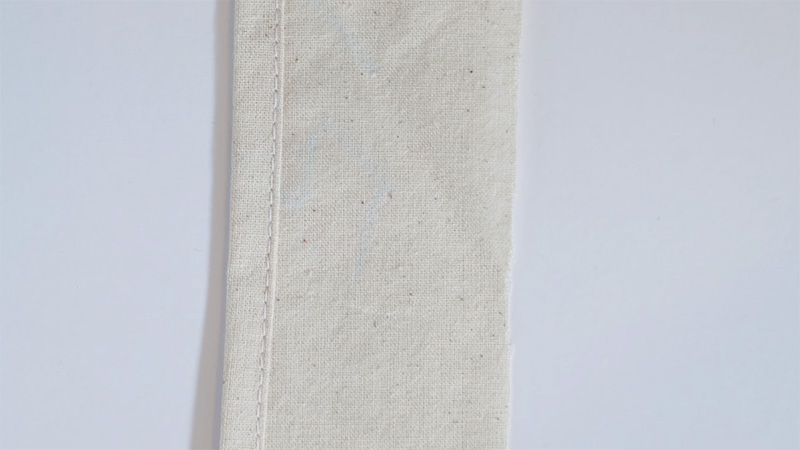
Selecting the right contrast fabric for a slot seam is essential to achieving the desired visual impact and style of your sewing project.
Here are some tips to help you choose the perfect contrast fabric:
Consider Color
The color of the contrast fabric is crucial. You can choose a color that complements the main fabric or one that provides a striking contrast. Think about the overall color scheme of your project and how the contrast fabric will fit into it.
Think About Texture
Texture adds depth and interest to your slot seam. Consider fabrics with different textures, such as satin, lace, velvet, or denim, to create a tactile contrast.
Texture can make your slot seam more visually appealing and dynamic.
Evaluate Pattern or Print
If you’re working with patterned or printed main fabric, decide whether you want the contrast fabric to be patterned as well or if you prefer a solid color.
A patterned contrast fabric can create a bold and unique look, while a solid color can provide balance.
Weight and Drape
Consider the weight and drape of the contrast fabric. Ensure it complements the main fabric in terms of thickness and stiffness. A fabric that is too heavy or stiff may affect the drape and flow of your garment.
Purpose and Style
Think about the purpose and style of your project. Is it for casual wear, formal attire, or home decor? The choice of contrast fabric should align with the overall style and intended use of the item.
Personal Preference
Ultimately, your personal preference plays a significant role. Choose a contrasting fabric that resonates with your taste and creative vision. Trust your instincts and your sense of aesthetics.
Test Swatches
It’s always a good idea to create test swatches using your main fabric and potential contrast fabrics. This allows you to see how they look together and how they interact in terms of color, texture, and pattern.
It also helps you assess the compatibility of the fabrics during sewing.
Consider the Project Scope
Keep in mind the scale and scope of your project. For larger, more prominent slot seams, you may opt for a bolder or more intricate contrast fabric. Smaller projects may benefit from subtler contrasts.
Think About the Message
Consider the message or story you want your sewing project to convey. The contrast fabric can be a tool for storytelling, emphasizing certain elements or themes in your design.
Consult References
Look for inspiration in fashion magazines, sewing books, and online resources. Analyze how designers use contrast fabrics in their creations to achieve specific effects and adapt those ideas to your project.
How to Prevent Fraying in Slot Seam Sewing?
Preventing fraying in slot seam sewing is essential to ensure the longevity and neatness of your project. Fraying can make your seams less durable and give your work a messy appearance.
Here are several ways to prevent fraying in slot seam sewing:
Use Pinking Shears
Pinking shears are scissors with zigzag blades that cut a zigzag edge along the fabric. This edge helps minimize fraying. After cutting your fabric pieces, trim the seam allowances or edges with pinking shears to reduce fraying.
Serge the Edges
If you have access to a serger (overlock machine), use it to finish the raw edges of your fabric. Serging creates a clean, enclosed edge that prevents fraying.
Serge the edges of both the contrast fabric strip and the main fabric pieces before sewing the slot seam.
Zigzag Stitch
On a regular sewing machine, set it to a zigzag stitch and use it to sew along the raw edges of your fabric pieces. This creates a similar effect to serging, enclosing the edges and reducing fraying.
Apply Fabric Glue or Fray Check
Fabric glue or fray check can be applied to the raw edges of your fabric. Allow it to dry completely before sewing the slot seam. These products create a barrier that prevents fraying.
French Seams
Instead of traditional slot seams, consider using French seams. French seams encase the raw edges within the seam itself, preventing fraying. This is particularly useful when working with delicate or sheer fabrics.
Use a Rolled Hem
For lightweight fabrics, you can create a rolled hem along the raw edges. This involves folding the edge over twice and stitching it down. A rolled hem gives a clean and fray-resistant edge.
Apply Seam Binding or Bias Tape
Seam binding or bias tape can be sewn along the raw edges of your fabric pieces. This not only prevents fraying but also adds a decorative touch. Simply fold the binding or tape over the edge and stitch it in place.
Encase Edges in Seams
When sewing your slot seam, make sure the raw edges of the fabric are enclosed within the seam allowances. This will hide the edges and prevent them from fraying.
Backstitch at the Beginning and End
When you start and finish your slot seam, use a backstitch to secure the threads. This helps keep the edges from unraveling during wear and washing.
Select Fabrics Wisely
Choose fabrics that are less prone to fraying. Fabrics like denim, canvas, and woven cotton are less likely to fray compared to loosely woven or delicate fabrics.
FAQs
Can I use a sewing machine for slot seams?
Yes, a sewing machine is commonly used for slot seams. It allows for precise stitching and control.
Is the slot seam suitable for all types of fabrics?
Slot seams work well with a variety of fabrics, but some may require special considerations. Choose fabrics that complement each other in terms of weight and drape for the best results.
Can slot seams be sewn by hand or with a sewing machine?
Yes, slot seams can be sewn by hand or with a sewing machine, offering flexibility in choosing the preferred method for your sewing project.
Are there any creative variations of slot seams for sewing enthusiasts?
Absolutely! Sewing enthusiasts can explore creative variations of slot seams by experimenting with unique contrast fabrics, textures, patterns, or intricate stitch designs for personalized, eye-catching effects.
Can I use slot seams for quilting projects?
Yes, slot seams can enhance quilting projects. They offer a decorative element and the opportunity to experiment with textures, colors, and patterns in quilting designs.
To Recap
Mastering the art of sewing a slot seam adds a delightful dimension to your sewing repertoire. This decorative technique allows you to transform ordinary fabrics into extraordinary creations by seamlessly integrating contrasting elements.
From elegant garments to stylish accessories, the slot seam offers a versatile means of personal expression and design innovation.
By carefully selecting the right contrast fabric, mastering the sewing steps, and paying attention to detail, you can create stunning, customized pieces that reflect your unique style and creativity.
As you embark on your sewing journey, remember that practice and experimentation are key to perfecting this technique. With each slot seam, you’ll unlock the potential to turn everyday sewing projects into works of art that truly stand out.
Leave a Reply